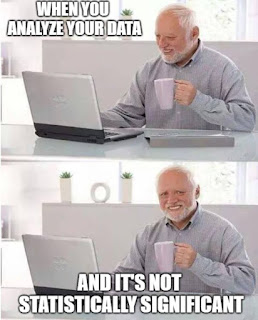Don’t forget that breathing is important!
I would highly recommend reading some
background on the research topic of the paper to place the work in a larger
context before diving in. When I first looked at the paper, I was completely
overwhelmed and didn’t really understand the message of the paper – and therefore
couldn’t really understand the data the figures were presenting. Looking up a
review article on the whole field helped me identify the context and purpose of
the research, and from there I was able to really appreciate all of the
different approaches used by the scientists. I also found it extremely helpful
to just sit down and carefully read through the paper, study the figures, and
take notes on important ideas before even thinking about the presentation, so
that I understood the topic and methods well and knew what I should emphasize
and what I would have to cut out of such a short presentation.
I found the time limit to be the
hardest part of the presentation. As soon as I started to practice my presentation,
I realized that it was far too long and I couldn’t fit everything that I wanted
to say into such a short time. I removed several slides and practiced
shortening my descriptions of each topic while still conveying the main ideas
on each slide. Even so, when I practiced in front of a grad student in my lab,
she said I was talking far too fast in my effort to fit everything in. I worked to slow down
my speech, but I was just so excited to convey all the information that I
could. Unfortunately, this worry combined with nerves meant I talked far too
fast when presenting – I’m unsure if I actually paused for break during the
whole ten minutes! In the future, I will make sure to condense the presentation
a lot more, so that I can slow down, breath, and make the presentation a lot
more understandable to the audience.


Comments
Post a Comment